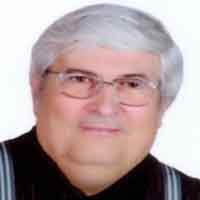Some Considerations about the Seismic Geotechnical Model of Arak City
Author(s):
Article Type:
Research/Original Article (دارای رتبه معتبر)
Abstract:
During an earthquake, the waves created by the fault activity in the bedrock propagate from deep to the ground. If the layers on the bedrock are alluvial, the amplitude and intensity of the waves will increase as the waves pass through them, and what reaches the ground will be completely different from what is created in the bedrock. Earthquake waves change their nature as they pass through the bedrock and enter another environment. In other words, the characteristics of an earthquake, depending on the physical and dynamic characteristics of the site, can be intensified or weakened at certain frequencies. The amount and intensity of the amplification of the waves depends on the characteristics of the alluvial layers and the initial wave. Considering that the structures and facilities on the ground are affected by these waves, the intensification of the waves can have very destructive effects on buildings and structures. Determining the magnitude of earthquake waves requires analytical work in an area, based on the characteristics of soil layers and earthquake characteristics. Arak is the cradle of Iran's industry and many strategic and important industries of the country are located in this region. For this reason, it has increased the rate of migration to this city and, as a result, has increased the population of the city, and in proportion to that, high-rise and important structures have been widely expanded in the city. Therefore, in view of all the above, seismic zoning is considered for use in the design of existing buildings and structures, and most importantly, vital decisions such as urban planning, comprehensive urban planning, and comprehensive urban planning. Although the importance of the effects of topography on the seismic response of the earth's surface has become clear to everyone today, due to the lack of comprehensive studies, most earthquake-resistant design codes as well as most seismic geotechnical microzoning guidelines have been used since then. The agent refused.So far, analytical, experimental, numerical and physical modeling methods have been used to study and solve the seismic response of surface topographic features. According to the collection of valid geotechnical information in Arak city, alluvium modeling has been done in this region and alluvial dynamic analysis studies have been performed as one-dimensional linear equivalents and two-dimensional ones using numerical methods and the results have been compared with each other.Considering the changes in the natural frequency of the soil in the studied directions, it can be concluded that in stations with natural frequency of the site less, the thickness of the sediments is slightly higher or the softness of the sediments is slightly higher or the floor rock is slightly lower (at greater depths) than the stations that have a higher natural frequency, Also, by observing the graphs obtained in the northwest-southeast direction, the natural period resulting from one-dimensional dynamic analysis differs by a maximum of 25% compared to two-dimensional analysis, which may be due to the "effect of considering topography in two-dimensional analysis. This is while in the northeast-southwest direction, the results are relatively consistent with each other, which shows the one-dimensional behavior of the site in this direction. Also, in terms of "classification" of soil type based on the shear wave velocity of the upper 30 meters, according to Regulation 2800, soil type has been reported in Arak.
Keywords:
Language:
Persian
Published:
Earthquake Science and Engineering, Volume:8 Issue: 2, 2021
Pages:
9 to 21
https://magiran.com/p2323740
سامانه نویسندگان
مقالات دیگری از این نویسنده (گان)
-
The Orthotropy Effect of Underground Inclusion on the Seismic Response of Ground Surface
S. Mojtabazadeh-Hasanlouei, M. Panji *, M. Kamalian
Sharif Journal Civil Engineering, -
Physical Modeling of Sand Beds Using a New Approacha of Rainer System
Ehsan Saeedi, Arash Razmkhah*, , Faradjollah Askari
Quranic Knowledge Research, -
Determination of two-dimensional shear-wave velocity profiles using single-station and array measurements of ambient noises in Hakimiyeh valley, Tehran, Iran
Mojtaba Siavashpour, , Mohsen Fazlavi *
Iranian Journal of Geophysics, Autumn 2024 -
Numerical Modeling of the Adjacency Effect on the Seismic Response of Homogeneous Semi-Sine Hills
Niloufar Babaadam *, Ali Uromeihy, Abdollah Sohrabi- Bidar, , Shahram Maghami
Earthquake Science and Engineering,



